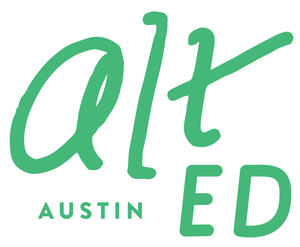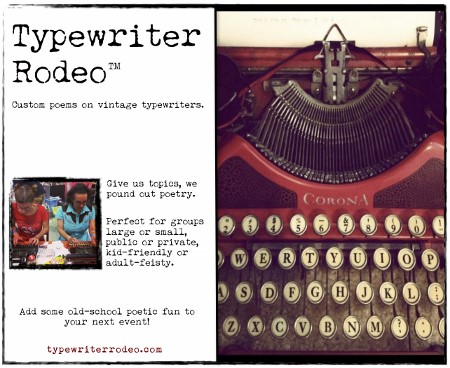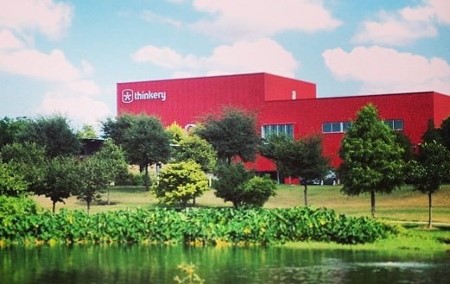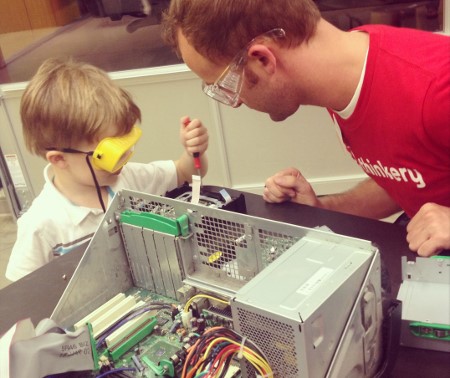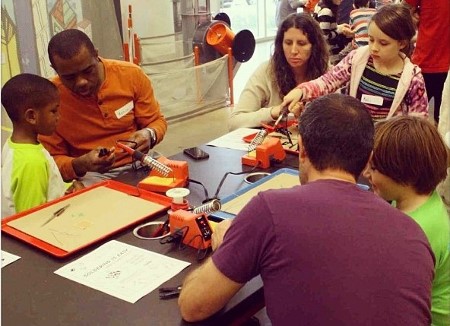Giveaway alert: A family pack of Austin Mini Maker Faire passes is up for grabs, plus free tickets for professional educators and a special discount code for homeschoolers! Read on.
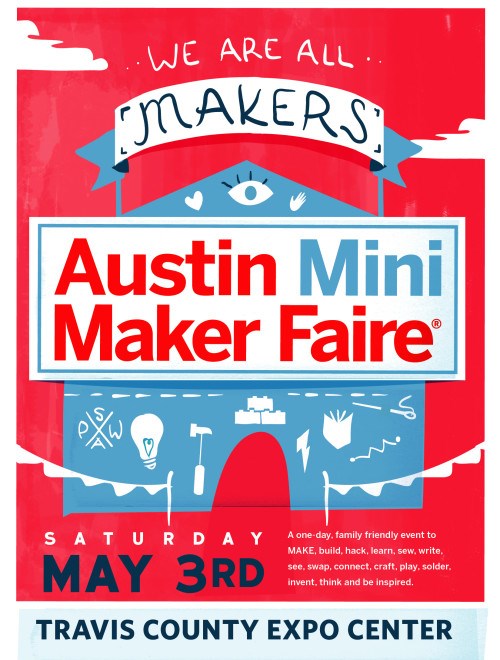
I love the theme of this year’s Austin Mini Maker Faire, as expressed in the beautiful posters designed by Kat Townsend: We are all makers. Even more exciting for me (and the reason Alt Ed Austin is a proud sponsor of AMMF 2014) is its brilliant demonstration of another theme: We are all learners. We are all teachers.
Underlying its well-deserved reputation for outlandish fun in the tech, craft, art, robotics, and sustainability arenas, the heart of Austin’s annual maker extravaganza is education. At a time when our traditional school systems are deep in crisis, the Faire serves as a showcase for learning experiences as they should be: hands-on, interdisciplinary, learner directed, multi-age, naturally engaging, noncompetitive, playful, and focused on using critical thinking skills and imagination to address real-world problems.

With the generous support of our special area sponsor, WonderLab, we have expanded the Maker Ed section of the Faire in a big way and added some extra perks for educators. Here’s what’s in store:
Free admission for professional educators! Just show some proof that you are an educator at check-in.
Special 20% discount for homeschooling families. Buy your adult and child tickets in advance using this code: AHS20OFF
Educators’ Lounge. This year we’re giving teachers and other education professionals a comfy place at the Faire to take a break and meet new colleagues. We’ll also facilitate some quick and fun ways for educators to trade ideas about incorporating making into their learning environments and overcoming maker ed challenges. As a thank-you for participating in the Lounge, we’ll have some great teacher-oriented swag bags. Many thanks to supervolunteers Mike DeGraff, Claudia Pepper, and Laura Minnigerode and these sponsors for making all of this happen: Five Elements Furniture, SparkFun, Texas Instruments, and UTeach.
Three huge tents devoted to Maker Ed. Fairegoers will experience a dizzying array of hands-on activities and demonstrations presented by schools and other educational programs from pre-K through college levels. Anchored by AMMF sponsor Skybridge Academy, these edu-makers will give Fairegoers opportunities to sharpen their wilderness survival skills, practice the fine art of bubble making, learn how a couple of local high school kids have built a 3D printer, and much, much more.
More edu-awesomeness outside the Maker Ed tents. Some of our event sponsors are bringing exhibits and activities so big they’ve claimed their own chunk of AMMF real estate:
- In the ever-popular Austin Tinkering School pavilion, kids can make their own racecars and try their luck in the Nerdy Derby, or hang out in the Open Shop, deconstructing electronics and creating their own marvels with all kinds of interesting building materials.
- The Thinkery’s Kid Zone will offer multiple STEAM (science, technology, engineering, art, and math) activities for young makers. Its hand-built trebuchet will be flinging things the old-fashioned way throughout the day.
- On the outdoor stage, kids of all ages will be amazed and edified by the Mad Science show. Grownups will learn to safely wow their friends and enemies with the fiery arts at Tim Deagan’s Propane 101 for Artists and Makers. And everyone, I mean everyone, will have a blast at Steve Wolf’s multi-award-winning Science in the Movies show. Check out the performance schedule and plan your day at the Faire!
- Inside the Expo Center arena, beyond the planetarium, aerial dancers, and the gajillion fascinating craft, tech, and arts exhibits, you’ll find a workshop space where you can learn to program a Raspberry Pi, ferment your own vinegar from table scraps, make a perfect hula-hoop, or turn your small business dreams into reality. Reserve your space in a workshop today!
This is only the tip of the iceberg, people. I’ve highlighted the overtly educational features of the Faire, but no matter how you choose to spend your time at AMMF, you’ll learn something. Jump off a tower into a giant marshmallow with the Stunt Ranch crew, find out how an intrepid professor is sustainably living in a dumpster for a year, or pedal like you’ve never pedaled before at the Austin Bike Zoo’s Interactive Wonderland and Carnival. I guarantee you’ll come away with that unmistakable feeling that we are all learners, we are all teachers. And for sure, we are all makers.
Giveaway!
You have a bunch of ways to enter this random drawing, with up to 10 chances to win an AMMF family pack of 2 adult and 2 child passes. If you’ve already bought your tickets, be sure to let your friends know about this opportunity to attend the Austin Mini Maker Faire for free! Enter by midnight Thursday, May 1, and we’ll announce the lucky winner right here in a blog update on Friday morning. Good luck!
a Rafflecopter giveaway
UPDATE: Congratulations to giveaway winner Suzanne H.! We look forward to seeing you and your family on Saturday. And thanks to everyone who entered the drawing. You can still buy discounted AMMF tickets in advance (through 10am Saturday) here.
